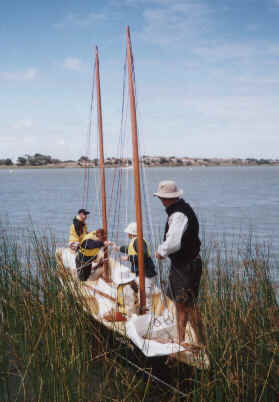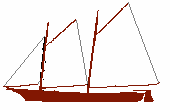 As it was:
As it was:
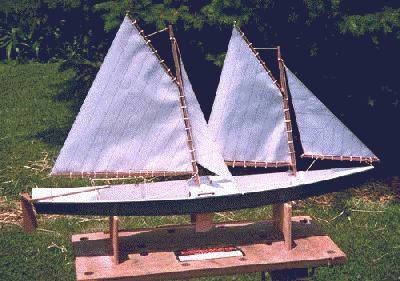
The 30-foot folding schooner is the ancestor of the non-folding light schooner. You'll find it discussed in Phil Bolger's now out of print book The Folding Schooner and Other Adventures in Boat Design, International Marine, Camden, Maine. This model photo courtesy of Zion Hill and copyright (c) Pete Gennaro was just too good to look past. You'll find large b&w photos in the Duck Flat Book of Dreams, including one with her carrying a crew of fifteen....
In profile, the folding schooner mimics some of the Gloucester schooners, particularly the McManus Indian Headers, avoiding the widow-making bowsprit and overlong main boom which re-surfaced in the Light Schooner. It's effectively two fifteen-foot skiffs joined by a dirty great hinge, with or without a locking device - hence the alternative name of Flicknife (or was it Jacknife?).
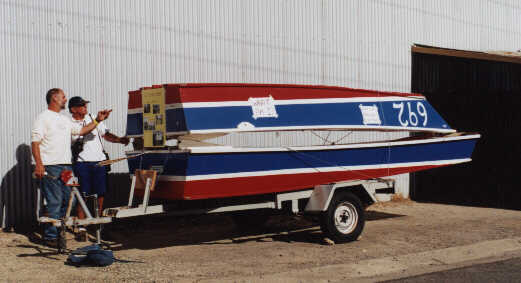
It folds and fits on quite a small trailer. This is the South Australian one, returned from oblivion, at the Goolwa Wooden Boat Festival, March 1999. Not yet ready to return to the water, but almost. Duck Flat-Wooden Boats founder guru Robert the Ayliffe isn't giving the finger, but rather illustrating some finer points in a radio interview...
The Folding Schooner competed in a Milang-Goolwa race before we built Flying Tadpole II, hence questions early in FT2's career about "does this one fold too?". A major addition to Murray Lakes myth and folklore came when the folding schooner during the race broke one of the chine bolts locking the hinged section and corckscrewed a bit. Over the years, this has turned into a tale of the schooner separating into its constituent parts and sailing to all points simultaneously.
As it is:
The rather tattered and unloved Bryan and Doreen (above) was taken away and eventually re-incarnated as Butterfly. She appeared in early 2000 for a Milang-Goolwa race, in the dinghy classes (!) but retired at the start because the Lale Alexandrina chop was breaking her apart again. Next seen at the SA Wooden Boat Festival March 2001: they'd beefed up the backing plates for the actual stress points at the hinges, but still needed some extra backing for mast steps.
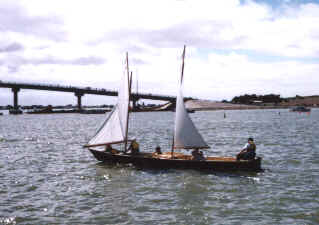
The volume is huge compared to the Light Schooner, and the profile quite different, but there's one thing in common:
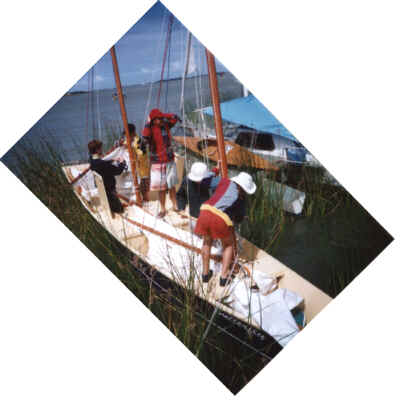
everyone
automatically stands up when arriving or departing.....
